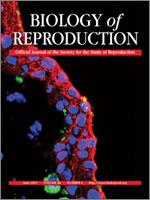Polycystic ovarian syndrome (PCOS) is characterized by hyperandrogenemia, polycystic ovaries, and menstrual disturbance and a clear association with insulin resistance. This research evaluated whether induction of insulin resistance, using dexamethasone (DEX), in a monovular animal model, the cow, could produce an ovarian phenotype similar to PCOS. In all of these experiments, DEX induced insulin resistance in cows as shown by increased glucose, insulin, and HOMA-IR (homeostasis model assessment of insulin resistance). Experiment 1: DEX induced anovulation (zero of five DEX vs. four of four control cows ovulated) and decreased circulating estradiol (E2). Experiment 2: Gonadotropin-releasing hormone (GnRH) was administered to determine pituitary and follicular responses during insulin resistance. GnRH induced a luteinizing hormone (LH) surge and ovulation in both DEX (seven of seven) and control (seven of seven) cows. Experiment 3: E2 was administered to determine hypothalamic responsiveness after induction of an E2 surge in DEX (eight of eight) and control (eight of eight) cows. An LH surge was induced in control (eight of eight) but not DEX (zero of eight) cows. All control (eight of eight) but only two of eight DEX cows ovulated within 60 h of E2 administration. Experiment 4: Short-term DEX was initiated 24 h after induced luteal regression to determine if DEX could acutely block ovulation before peak insulin resistance was induced, similar to progesterone (P4). All control (five of five), no P4-treated (zero of six), and 50% of DEX-treated (three of six) cows ovulated by 96 h after luteal regression. All anovular cows had reduced circulating E2. These data are consistent with DEX creating a lesion in hypothalamic positive feedback to E2 without altering pituitary responsiveness to GnRH or ovulatory responsiveness of follicles to LH. It remains to be determined if the considerable insulin resistance and the reduced follicular E2 production induced by DEX had any physiological importance in the induction of anovulation.
How to translate text using browser tools
24 April 2013
Effect of Glucocorticoid-Induced Insulin Resistance on Follicle Development and Ovulation
Katherine S. Hackbart,
Pauline M. Cunha,
Rudelle K. Meyer,
Milo C. Wiltbank
ACCESS THE FULL ARTICLE

Biology of Reproduction
Vol. 88 • No. 6
June 2013
Vol. 88 • No. 6
June 2013
dexamethasone
follicle
follicular development
glucocorticoid
hypothalamus
ovary
ovulation




